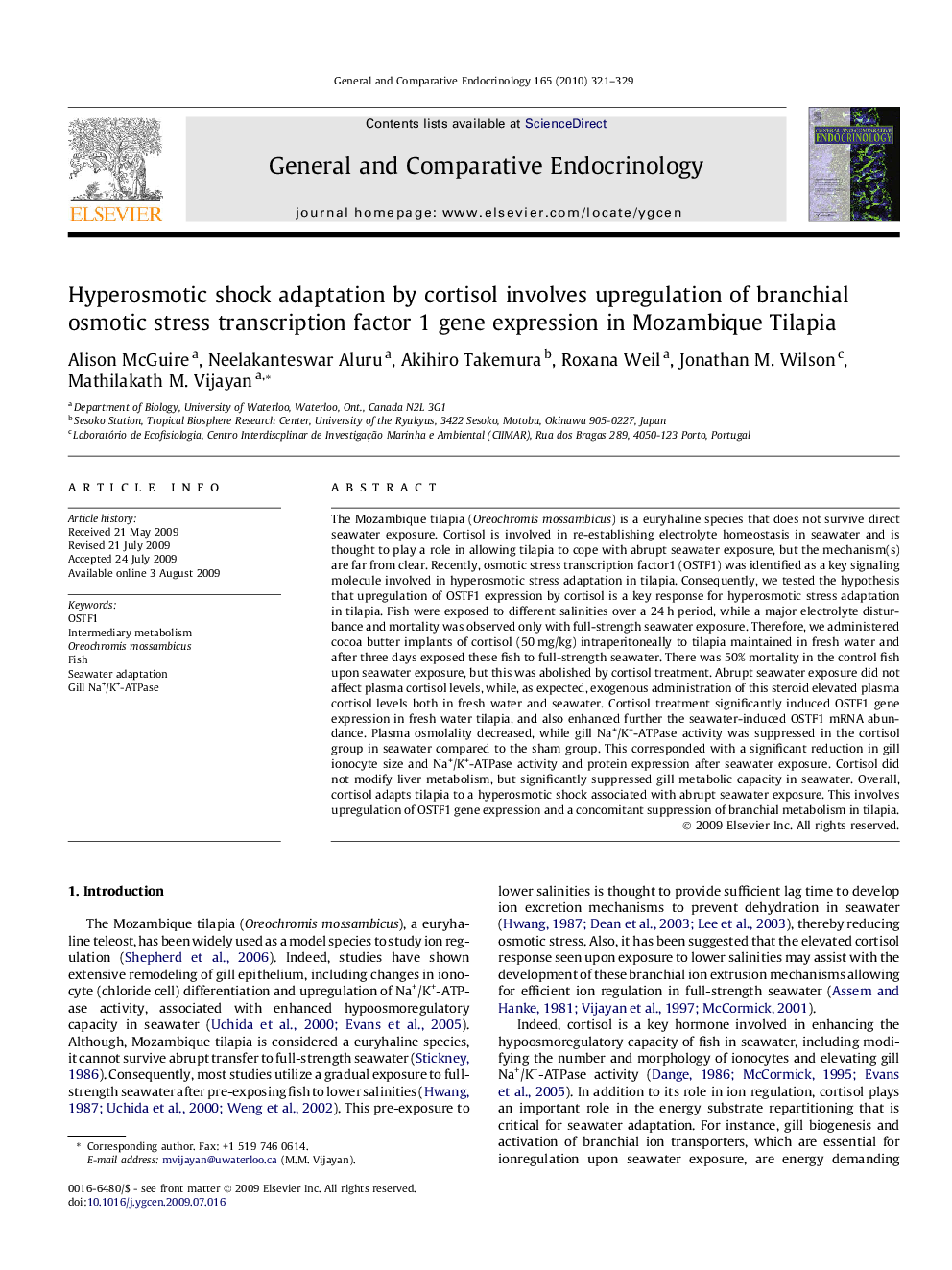| کد مقاله | کد نشریه | سال انتشار | مقاله انگلیسی | نسخه تمام متن |
|---|---|---|---|---|
| 2801459 | 1156159 | 2010 | 9 صفحه PDF | دانلود رایگان |

The Mozambique tilapia (Oreochromis mossambicus) is a euryhaline species that does not survive direct seawater exposure. Cortisol is involved in re-establishing electrolyte homeostasis in seawater and is thought to play a role in allowing tilapia to cope with abrupt seawater exposure, but the mechanism(s) are far from clear. Recently, osmotic stress transcription factor1 (OSTF1) was identified as a key signaling molecule involved in hyperosmotic stress adaptation in tilapia. Consequently, we tested the hypothesis that upregulation of OSTF1 expression by cortisol is a key response for hyperosmotic stress adaptation in tilapia. Fish were exposed to different salinities over a 24 h period, while a major electrolyte disturbance and mortality was observed only with full-strength seawater exposure. Therefore, we administered cocoa butter implants of cortisol (50 mg/kg) intraperitoneally to tilapia maintained in fresh water and after three days exposed these fish to full-strength seawater. There was 50% mortality in the control fish upon seawater exposure, but this was abolished by cortisol treatment. Abrupt seawater exposure did not affect plasma cortisol levels, while, as expected, exogenous administration of this steroid elevated plasma cortisol levels both in fresh water and seawater. Cortisol treatment significantly induced OSTF1 gene expression in fresh water tilapia, and also enhanced further the seawater-induced OSTF1 mRNA abundance. Plasma osmolality decreased, while gill Na+/K+-ATPase activity was suppressed in the cortisol group in seawater compared to the sham group. This corresponded with a significant reduction in gill ionocyte size and Na+/K+-ATPase activity and protein expression after seawater exposure. Cortisol did not modify liver metabolism, but significantly suppressed gill metabolic capacity in seawater. Overall, cortisol adapts tilapia to a hyperosmotic shock associated with abrupt seawater exposure. This involves upregulation of OSTF1 gene expression and a concomitant suppression of branchial metabolism in tilapia.
Journal: General and Comparative Endocrinology - Volume 165, Issue 2, 15 January 2010, Pages 321–329